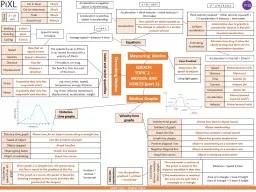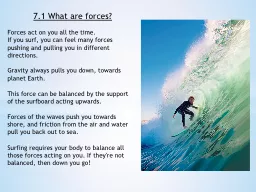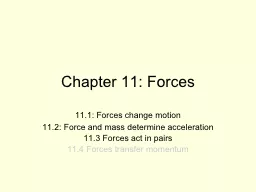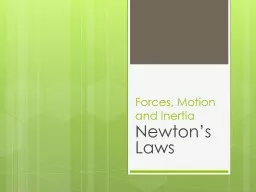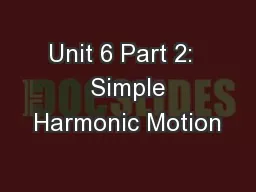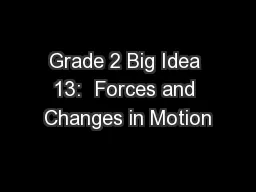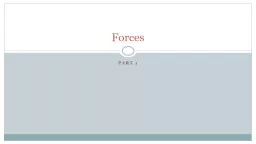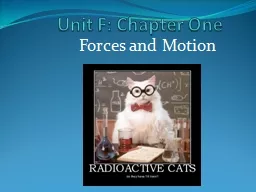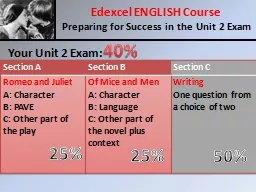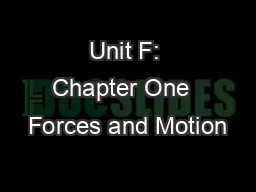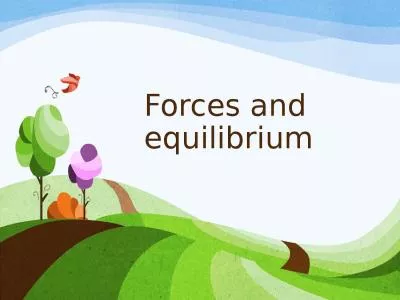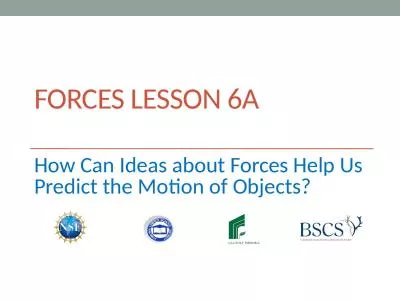PPT-EDEXCEL TOPIC 2 - MOTION AND FORCES (part 1)
Author : alexa-scheidler | Published Date : 2020-01-14
EDEXCEL TOPIC 2 MOTION AND FORCES part 1 Describing Motion Average speed distance time s d t Speed Metresecond ms Distance Metre m Time Second s Current Ampere
Presentation Embed Code
Download Presentation
Download Presentation The PPT/PDF document "EDEXCEL TOPIC 2 - MOTION AND FORCES (pa..." is the property of its rightful owner. Permission is granted to download and print the materials on this website for personal, non-commercial use only, and to display it on your personal computer provided you do not modify the materials and that you retain all copyright notices contained in the materials. By downloading content from our website, you accept the terms of this agreement.
EDEXCEL TOPIC 2 - MOTION AND FORCES (part 1): Transcript
Download Rules Of Document
"EDEXCEL TOPIC 2 - MOTION AND FORCES (part 1)"The content belongs to its owner. You may download and print it for personal use, without modification, and keep all copyright notices. By downloading, you agree to these terms.
Related Documents

